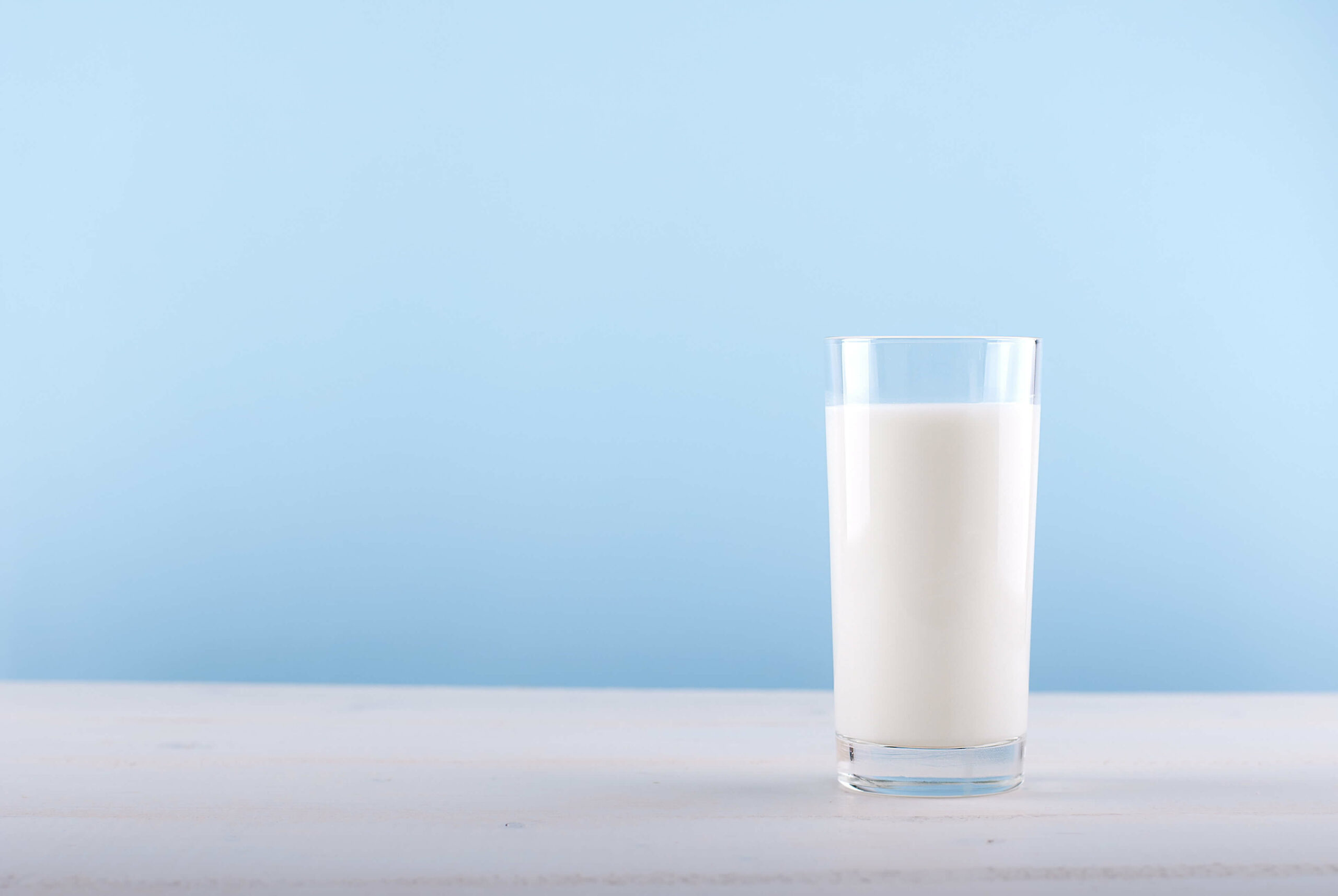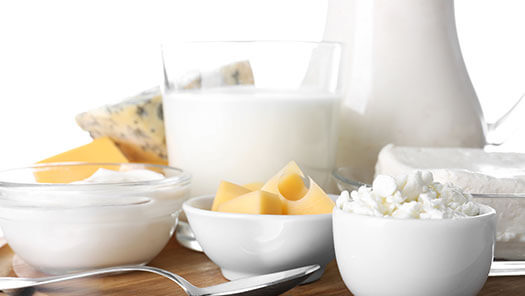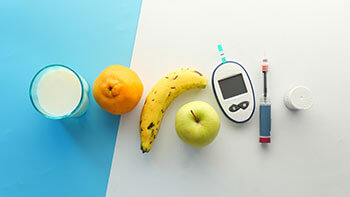Holistic Health Benefits of the Milk Matrix: Beyond Individual Nutrients For many years, nutrition research focused on how individual nutrients,..
GET THE FACTSMILK AND PEDIATRIC NUTRITION
Growing Strong: The Importance of Milk to Nourish Children
Leading pediatric and health organizations recognize the benefits of milk and dairy foods for early childhood. Just how much milk is recommended for children and different ages, and which nutrients will kids get from a tall glass of milk? Here are the guidelines and the latest science on milk and children.
Recommendations for milk and dairy foods in children
The Canadian Pediatric Society’s Nutrition for Healthy Term Infants outlines milk and dairy food guidelines for babies and toddlers from six to 24 months (2 years) of age1.
After six months of age: Breastmilk is still the main source of fluid and nourishment, and dairy foods can be introduced in small amounts as one of baby’s first foods. While milk can be used as an ingredient in mixed dishes, full cups of milk should not be introduced to babies yet because milk has more nutrients than babies require. Instead, dairy can be used as an ingredient in many ways, such as:
- Using milk for making pancakes
- Adding yogurt to baby cereal
- Mixing milk and cheese in noodles or rice
- Adding cheese to toast strips
- Offering grated cheese
Between 9-12 months: Cups of milk (rather than small amounts of milk as an added ingredient in mixed dishes) can be introduced to babies between nine to 12 months of age. Babies can continue to be breastfed or can be offered 500 mL (2 cups) of whole milk (3.25%) per day. Limit milk intake to no more than 750 mL (3 cups) per day.
Which milk should be offered? Choose pasteurized whole milk (3.25% MF) for babies under age two. Skim milk is not appropriate in the first two years because it does not contain enough fat for baby’s growth and development.
After age two: At this stage, children tend to eat a wider variety of foods and may rely less on milk as a main source of nutrients. It is still recommended that children drink up to two cups (500 mL) of milk per day to meet nutrient needs . It can be any pasteurized milk: skim, 1%, 2 % or whole.
Nutrients in milk
Milk contains 15 essential nutrients that are important for important for children’s normal growth and development:
|
|
Dairy Matrix: These nutrients, along with other components in milk and dairy foods, work together to form the “dairy matrix.” This describes the unique structure of a dairy food, its components (e.g. nutrients and non-nutrients) and how they interact. The matrix also includes the structure and how the dairy product is produced– for example, fermentation of milk into yogurt or cheese adds to the health benefits.2
Dairy matrix health effects refer to the impact of the whole dairy food on health that extends beyond its individual components. The synergistic effect of multiple dairy nutrients is more valuable than any single nutrient.3 For example, the combination of calcium, vitamin D, protein, magnesium and potassium in milk is important for bone health. Bones require a combination of these nutrients, not just one of them.Milk and health
Research supports milk as an important part of a healthy and balanced lifestyle. Here are some benefits of milk for children.
Milk and Oral Health: Milk and dairy foods are important for healthy teeth. They contain a unique combination of anti-decay nutrients such as calcium, phosphorus and the milk protein, casein, which protect enamel. Milk may also help protect against cavities.5
Studies show an association between dairy products and increased total body bone mineral content in children and adolescents.6 The association is due to several nutrients in dairy that work synergistically to support bones including calcium, protein, potassium, magnesium, vitamin D, zinc and phosphorus. Increases in peak bone mass in young adulthood are associated with:
- fewer bone fractures in children
- a reduced risk of hip fractures as adults
- a reduced risk of developing osteoporosis later in life.7,8
Milk and mental health
Studies show that milk may help combat depression and anxiety in children.9 This association may be due to nutrients known to play roles in brain health. Specifically:
- Calcium regulates neurotransmitter release.10
- Milk proteins are rich in the amino acid tryptophan, a precursor to serotonin.11
- Vitamin D may protect against inflammation and oxidative stress, which may play a role in depression and anxiety. 12
Milk vs. plant-based beverages for children
Milk naturally contains readily absorbed nutrients, and its nutrient profile is hard to replicate. Plant-based beverages (such as oat beverage or almond beverage) are formulated products made to mimic milk, but most fall short of the 15 nutrients found in milk, including protein.
The North American Society for Pediatric Gastroenterology, Hepatology, and Nutrition’s Nutrition Committee says that “substitution of a milk that does not provide a similar nutritional profile to cow’s milk can be deleterious to a child’s nutritional status, growth, and development.” The group adds that misuse of certain plant-based beverages can include failure to gain weight, decreased stature, kidney stones and nutrient deficiencies including anemia. They note that a cup of almond or rice beverage provides only about 2% or 8%, respectively, of the protein found milk.13
A joint statement from the Canadian Pediatric Society and Dietitians of Canada discourages parents from relying on PBB for their children.14 The statement grew out of the concern from public health dietitians who found infants and young children becoming malnourished after being fed plant-based drinks as a main beverage.
Calcium in milk is naturally occurring. Unlike milk, plant-based beverages do not naturally contain adequate calcium, so calcium is added. While milk and PBB may appear to have comparable amounts of calcium on the Nutrition Facts table, there’s a hiccup. The calcium that’s added to PBB tends to sink to the bottom of the unshaken beverage container, where it may not be ingested unless the beverage is well-shaken.15
| MILK | ||||||||||
| Calories | Fat (g) | Carbohydrate (g) | Protein (g) | Sodium (mg) | Potassium (%DV) | Calcium (%DV) | Vitamin A (%DV) | Vitamin D (%DV) | Vitamin B12 (%DV) | |
| Skim Milk | 90 | 0 | 13 | 9 | 105 | 12 | 30 | 15 | 13 | 45 |
| 1% milk | 110 | 2.5 | 12 | 9 | 100 | 12 | 30 | 10 | 13 | 45 |
| 2% milk | 130 | 5 | 12 | 9 | 100 | 12 | 30 | 10 | 13 | 45 |
| 3.25% milk | 160 | 8 | 12 | 9 | 100 | 12 | 30 | 10 | 13 | 45 |
| Lactose free skim milk | 70 | 0 | 7 | 60 | 5 | 23 | 11 | 13 | 38 | |
| Lactose free 1% milk | 90 | 2.5 | 7 | 9 | 60 | 5 | 23 | 11 | 13 | 38 |
| Lactose free 2% milk | 110 | 5 | 7 | 9 | 60 | 5 | 23 | 11 | 13 | 38 |
| Lactose free 3.25% milk | 140 | 8 | 7 | 9 | 60 | 5 | 23 | 11 | 13 | 38 |
| Plant Based Beverages | ||||||||||
| Calories | Fat (g) | Carbohydrate (g) | Protein (g) | Sodium (mg) | Potassium (%DV) | Calcium (%DV) | Vitamin A (%DV) | Vitamin D (%DV) | Vitamin B12 (%DV) | |
| Almond (original) | 60 | 2.5 | 8 | 1 | 150 | 1 | 23 | 11 | 10 | 42 |
| Almond (unsweetened) | 30 | 2.5 | 1 | 1 | 130 | 4 | 23 | 11 | 10 | 42 |
| Cashew (original) | 60 | 2.5 | 9 | 1 | 160 | 1 | 23 | 11 | 10 | 42 |
| Cashew (unsweetened) | 25 | 2 | 1 | 1 | 160 | 1 | 23 | 11 | 10 | 42 |
| Soy (original) | 100 | 4 | 8 | 6 | 90 | 8 | 30 | 10 | 45 | 50 |
| Soy (unsweetened) | 80 | 3.5 | 4 | 8 | 40 | 9 | 30 | 10 | 45 | 50 |
| Oat (original) | 80 | 3.5 | 12 | 1 | 100 | 4 | 23 | 11 | 10 | 42 |
| Oat (unsweetened) | 70 | 4.5 | 8 | 1 | 90 | 4 | 23 | 11 | 10 | 42 |
| Macadamia (original) | 70 | 4.5 | 7 | 1 | 115 | 0 | 35 | 25 | 20 | N/A |
| Macadamia (unsweetened) | 55 | 6 | 1 | 1 | 110 | 0 | 38 | 25 | 20 | N/A |
Milk is nutritious for children. Milk’s unique composition provides key nutrients for children’s healthy growth and development. The dairy matrix is important and can’t be replicated by plant-based beverages. The synergistic effect of multiple dairy nutrients is more valuable than any single nutrient.15
Advise parents and caregivers to offer 2 cups of milk per day to children so they can reap the benefits from the unique nutrient package of milk.
CITATIONS
1https://cps.ca/en/documents/position/nutrition-healthy-term-infants-6-to-24-months
2https://www.sciencedirect.com/science/article/pii/S0002916522048705?via%3Dihub
3https://academic.oup.com/nutritionreviews/article/60/4/97/1886382?login=false
4https://pubmed.ncbi.nlm.nih.gov/33791255/
6https://link.springer.com/article/10.1007/s00198-015-3440-3
7https://www.tandfonline.com/doi/full/10.1080/10408398.2020.1810624
8https://pubmed.ncbi.nlm.nih.gov/36162661/
9https://www.ncbi.nlm.nih.gov/pmc/articles/PMC2689218/
10https://www.mdpi.com/2072-6643/14/4/831
11https://pubs.rsc.org/en/content/articlelanding/2015/FO/C5FO00407A
12https://link.springer.com/article/10.1007/s40263-019-00640-4
13https://journals.lww.com/jpgn/fulltext/2020/08000/north_american_society_for_pediatric.30.aspx
14https://cps.ca/en/media/dietitians-pediatricians-advise-parents-to-exercise-caution-with-plant-base
15https://www.sciencedirect.com/science/article/pii/S0002916522048705?via%3Dihub
Resources
Milk and Mucus
Milk and Mucus The current body of research indicates that milk and other dairy foods do not increase mucus production...
GET THE FACTSMilk and Pediatric Nutrition
MILK AND PEDIATRIC NUTRITION Growing Strong: The Importance of Milk to Nourish Children Leading pediatric and health organizations recognize the..
GET THE FACTSMilk and Physical Activity
Milk and Physical Activity Whether your patients are occasional gym-goers or are training intensely for a triathlon or sport tournament,..
GET THE FACTSMilk and Lactose Intolerance
Milk and Lactose Intolerance Having lactose intolerance does not mean your patients need to give up dairy Highlights: Evidence shows..
GET THE FACTSMilk and Hypertension
MILK AND BLOOD PRESSURE Milk plays a role in disease prevention for many chronic conditions, including heart disease and hypertension...
GET THE FACTSDairy and Colorectal Cancer
DAIRY AND COLORECTAL CANCER Colorectal cancer is the second leading cause of cancer-related deaths in men and the third in..
GET THE FACTSHeart Health Benefits Of Milk
Heart Health Benefits Of Milk Diet and lifestyle play a role in heart disease prevention. It is estimated that 80%..
GET THE FACTSMilk and Plant Based Drinks
MILK AND PLANT BASED DRINKS There are many different plant-based beverages (PBB) available in the grocery store and it is..
GET THE FACTSDisease Prevention
Disease Prevention Milk plays a role in disease prevention for many chronic conditions, including heart disease, hypertension, type 2 diabetes..
GET THE FACTSMilk Nutrition Facts
Milk Nutritions Facts Milk is a source of essential nutrients. There is extensive evidence to show that including milk and..
GET THE FACTSRESOURCES
Download useful resources, research studies, and fact sheets on the benefits of dairy

Nutrients in Dairy
As a source of complete protein and essential nutrients, drinking milk is a simple way to support optimal health.

Dairy and Disease Prevention
Naturally nutrient dense, milk helps to combat nutrition deficiencies and ward off heart disease, hypertension, and colorectal cancer.

Dairy Milk and Plant Based Beverages
All forms of milk, including lactose-free milk, contain complete protein, vitamins, and minerals.

Heart Health Benefits of Milk
It is estimated that 80% of heart disease cases can be prevented with lifestyle changes that include a nutritious diet, regular exercise, and smoking cessation.

Dairy and Colorectal Cancer
Studies have shown that high consumption of total dairy products and total milk was associated with a lower risk of developing colorectal cancer.

Milk and Hypertension
Milk plays a role in disease prevention for many chronic conditions, including heart disease and hypertension. Learn how adding milk into your patients’ diets can help with blood pressure management.

Milk and Lactose Intolerance
Some people have trouble digesting lactose, but that doesn’t mean giving up dairy! Read on to learn more about lactose intolerance, how it’s formally diagnosed, and how you can provide the best nutrition advice to patients.

Milk and Physical Activity
Milk has a unique combination of nutrients that make it the ideal beverage for post-exercise rehydration and protein synthesis.

Milk and Pediatric Nutrition
Leading pediatric and health organizations recognize the benefits of milk and dairy foods for early childhood. Just how much milk is recommended for children, and which nutrients will kids get from a tall glass of milk?

Milk and Mucus
When a runny nose or congestion appears, many people believe they need to cut out milk to reduce mucus. It turns out that this is a myth, and studies show that milk does not cause mucus.

Diabetes Prevention and Milk
Take a closer look at the role of milk in the prevention of T2D. There are potential mechanisms through which milk and dairy foods may play a role in reducing the risk of developing type 2 diabetes





